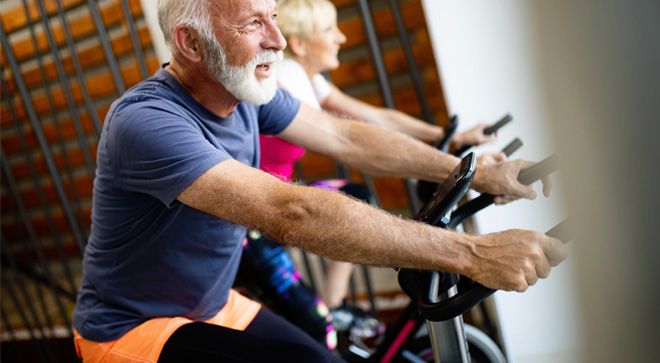News
Article
Physical Activity May Help Reduce Pain in Cancer Survivors
Author(s):
Survivors who were more physically active may experience less pain than survivors who were not as physically active, research found.
Exercise may help decrease pain in cancer survivors, research showed.

Cancer survivors who increased physical activity may have less pain than survivors who are not as physically active, according to a recent study published in the journal Cancer. Researchers from the study also found that there was not a significant difference between people with and without a history of cancer regarding physical activity and pain intensity reduction.
“Meeting or exceeding physical activity guidelines was associated with less pain intensity compared to being physically inactive. People who remained active longer term, were previously physically active or became active also reported less pain than those who remained inactive,” the study authors wrote.
In particular, the researchers sought to determine if physical activity would lessen pain in people with a history of cancer. They established that physically active participants — even if they recently became physically active — reported having less pain than participants who remained physically inactive.
“Participants who became active after previously being inactive had less pain than those who remained inactive is a promising finding and highlights the benefit of increasing physical activity after cancer,” wrote the study authors.
“We also observed less pain in people who were previously active but became inactive compared to participants who remained inactive throughout,” they wrote. “This may suggest that the benefit of physical activity for pain intensity can be maintained even after a period of inactivity.”
Researchers included 51,439 participants without a history of cancer and 10,651 participants with a history of cancer in the analysis. Of the total number of participants, 1,388 did not identify as non-Latino and White, of which 612 participants identified as Black, 321 as Asian/Pacific Islander, 249 as Latino (all races) and 87 as other. Researchers noted that race was unknown for 119 participants.
Of the participants who had a history of cancer, researchers reported that there were more men than women: 58% with a history of cancer and 38% without a history of cancer.
In terms of levels of physical activity, researchers determined that the levels were similar among participants with and without a history of cancer, with 44,317 participants most commonly reporting walking as their form of physical activity.
Researchers found that other common physical activities participants reported included weight training (12,619 participants), biking (11,718 participants), other aerobic activities (11,440 participants) and jogging/running (5,280 participants).
Among participants with a history of cancer, researchers noted that there was likely an association between physical activity and sex, cancer site and treatment they received. More specifically, they found that effect estimates were more prevalent in women than men.
The effect estimates were also larger among participants with breast, blood and other cancers, compared with colorectal, lung or prostate cancers, the researchers stated.
“For people with a history of cancer, the relationship between physical activity and pain was stronger in women compared to men,” researchers wrote in the study. “This may partially be explained by pain associated with different cancer types because we also noted slightly larger effect estimates for breast compared to prostate cancer.”
Treatment-wise, researchers found that it was more evident that participants who received radiation and chemotherapy and participants who never received radiation or chemotherapy benefited from physical activity, compared with participants who received radiation alone or chemotherapy alone.
Along with analyzing the difference between physical activity and pain, researchers also evaluated the association between pain and painkiller use in participants with a history of cancer.
“There was no relationship between physical activity and [painkiller] use in people with a history of cancer,” they wrote. “This was unexpected because it was reasoned that as pain would decrease so too would [painkiller] use. The finding may reflect that although physical activity improves pain, it may not improve it enough to noticeably change [painkiller] use.”
For more news on cancer updates, research and education, don’t forget to subscribe to CURE®’s newsletters here.




